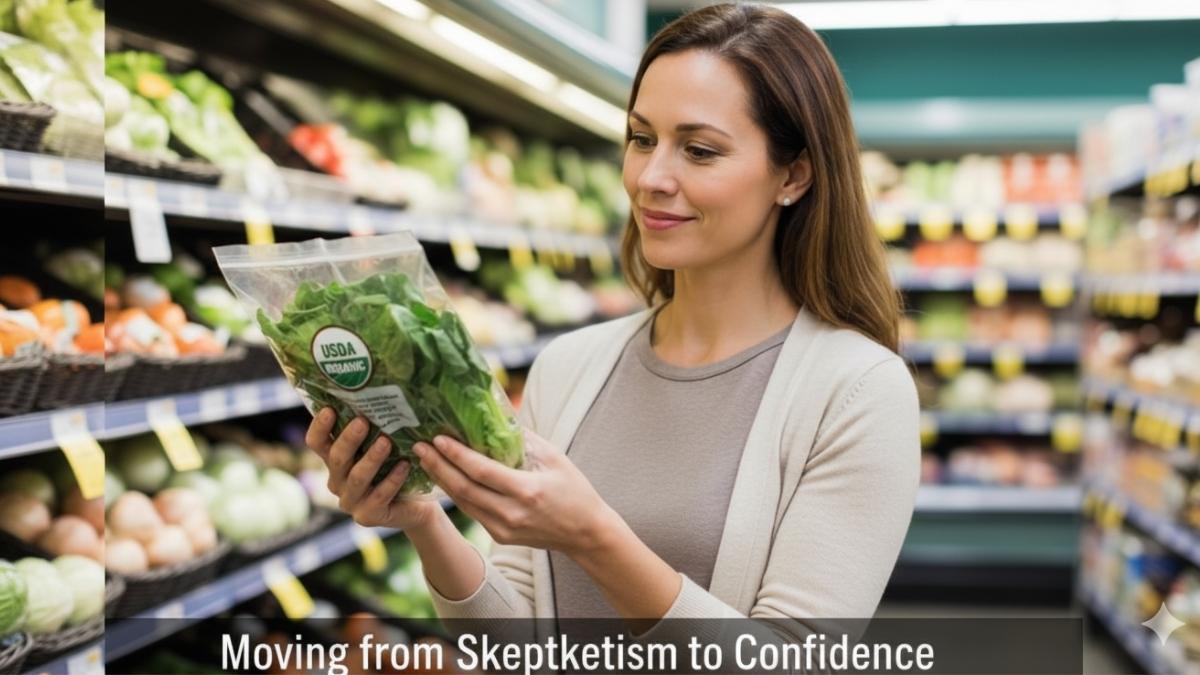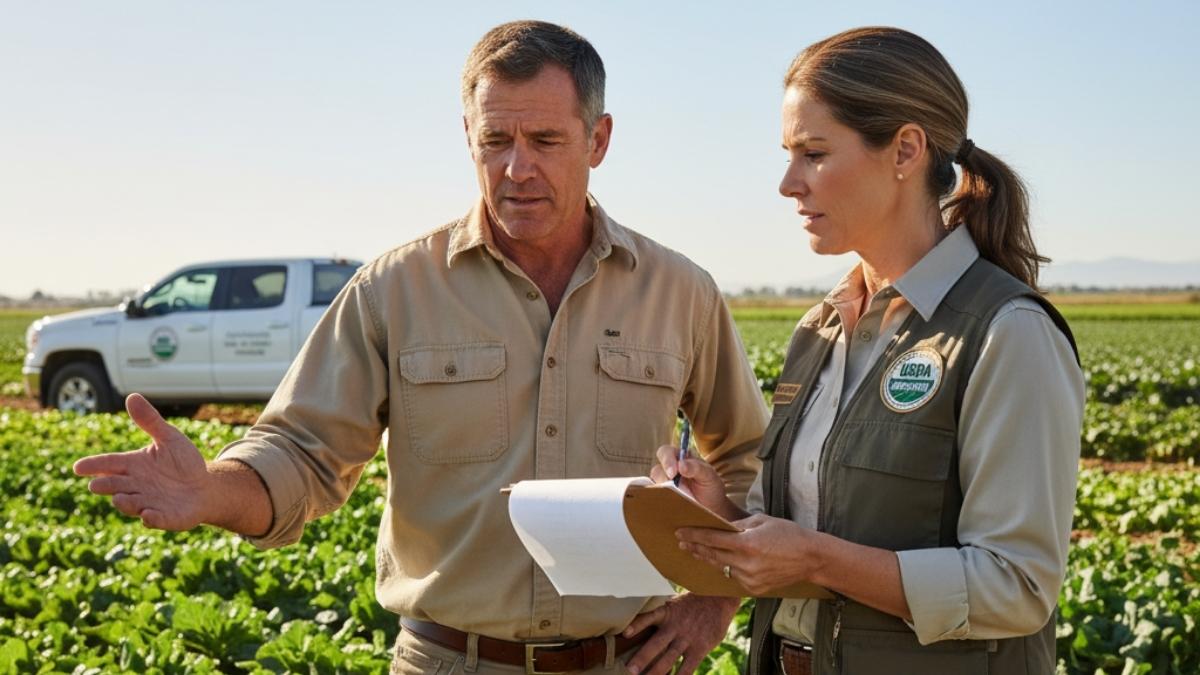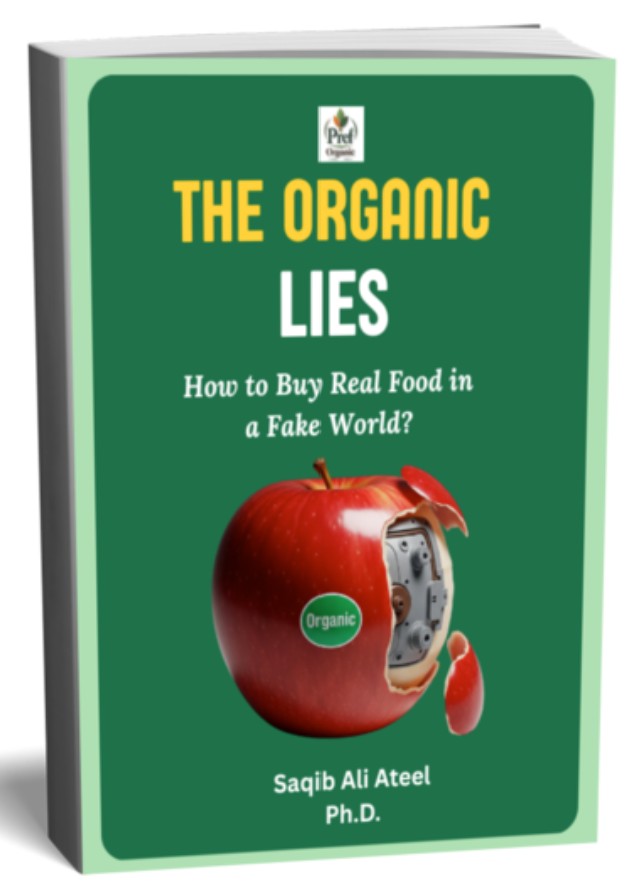The USDA Guidelines for Organic Food: A PhD Farmer's Tour
of the 4 Promises Behind the Seal 📜
You've learned to trust the "USDA Organic" seal. You look for it in the aisle as your shield against the marketing hype of "Natural" or other confusing claims. But as a "skeptical believer," a part of you still wonders. Your desire to know the USDA guidelines for organic food is a mission for proof.
You're past the initial "what" and you're here for the "why." You're asking the fundamental questions:
"What are the actual rules?"
"What does this seal really guarantee my family?"
"Is it a legal standard, or just a suggestion?”
“Who checks?"
I understand this feeling completely. As a law graduate, agricultural marketing student, and a farmer, I've spent a part of my life studying these rules and putting them into practice with my own hands in the soil.
You're worried you're about to read a dense, legal document. I'm here to be your translator.
My promise to you is to be the calm, clear voice that cuts through the noise. We are going to take the complex, legal "guidelines" and translate them into a simple, empowering "Organic Rulebook." This entire system—everything you need to know—is built on four core promises.
Let's unpack them together.
Your 60-Second "Rulebook": The 4 Core Promises
You're busy. You need confidence, fast. Here is the definitive proof that the USDA organic food seal is trustworthy. The entire system is built on these four guarantees.
- Promise #1: The Soil Promise (The Farm) 🌱 This is the "Farmer's Hands" guarantee. It sets strict rules for the farm, banning synthetic pesticides, synthetic fertilizers, and GMOs.
- Promise #2: The Purity Promise (The Factory) 🏭 This promise covers processing after the food leaves the farm. It bans artificial colors, flavors, and preservatives.
- Promise #3: The Tiers of Trust (The Label) 🏷️ This is the "honesty" promise. It ensures the label accurately reflects how much of the product is organic, from "100%" down to "Made with Organic."
- Promise #4: The Proof Promise (The Inspector) ✅ This is the ultimate trust-builder. It guarantees the rules aren't just suggestions; a mandatory annual inspection from a third-party, USDA-accredited agent legally enforces them.
That's it. That's the system. It's a "rulebook" of proof. Now, let's dive into each promise so you can feel that unshakable confidence you deserve.

Promise #1: The Soil Promise (The Farm) 🌱
This is where all organic food begins, and it's the promise closest to my heart as a farmer. This is the part of the "rulebook" that connects the label directly to the land. It defines organic food by what doesn't happen on the farm.
When you see the USDA Organic seal, you are guaranteed that the farm followed these foundational rules:
- No GMOs, Period: The use of genetically modified organisms (GMOs) or genetically engineered seeds is strictly prohibited.
- No Prohibited Pesticides: This is a big one. To control pests, farmers must use mechanical or biological methods first (like beneficial insects). If that's not enough, they can only use a synthetic substance if it has been reviewed and approved for the "National List of Allowed and Prohibited Substances". Most common synthetic pesticides are banned.
- No Synthetic Fertilizers: A farmer can't just spray the soil with chemical fertilizers. Soil fertility must be managed through natural, soil-building practices like crop rotation, cover crops, and compost.
- No Sewage Sludge or Irradiation: The guidelines explicitly ban the use of sewage sludge (biosolids) as fertilizer and the use of ionizing radiation for preservation.
The Farmer's Take: This promise is the soul of the organic movement. It's a commitment to building living, healthy soil for the long term, not just treating it like a dead medium to prop up with chemicals.
Promise #2: The Purity Promise (The Factory) 🏭
The USDA guidelines for organic food don't stop at the farm gate. A product can be grown in the most beautiful organic soil, but what happens when it's turned into pasta sauce, cereal, or a frozen meal?
This is the Purity Promise, and it governs processing and handling.
- No Artificial "Junk": Organically processed foods are prohibited from containing artificial preservatives, colors, or flavors.
- Strict Separation: Handlers must have a plan to prevent organic products from mixing with or touching non-organic products and prohibited substances (like chemical cleaning agents).
The Farmer's Take: This promise is what makes the USDA organic food label a holistic guarantee. It ensures that the farmer's hard work in the field isn't undone in the factory. It guarantees the product in the box is as clean as the ingredients that came from the farm.

Promise #3: The Tiers of Trust (The Label) 🏷️
This promise is all about honesty and transparency. The guidelines ensure that the words on the front of the package accurately reflect what's on the inside.
This is where the rules apply to the different labels you see:
- "100% Organic": All ingredients and processing aids must be certified organic.
- "Organic" (with the Seal): This is the most common one. The product must contain at least 95% certified organic ingredients. The remaining 5% must be non-organic ingredients that are not commercially available in organic form and are on the approved National List.
- "Made with Organic...": The product must contain at least 70% certified organic ingredients. These products cannot use the green USDA seal, but can list up to three organic ingredients on the front.
The Farmer's Take: This promise is what makes the organic label so much more trustworthy than "Natural." There's no guesswork. The "Tiers of Trust" gives you, the shopper, a transparent and honest report card.
Promise #4: The Proof Promise (The Inspector) ✅
This is it. This is the promise that should silence your "skeptical believer" for good.
You're asking, "This all sounds great, but who checks? Is this just an honor system?"
Absolutely not.
The "Proof Promise" is the single most important part of the USDA guidelines for organic food. It is what separates this seal from every empty marketing claim.
- It's a Legal Standard: The "Organic" label is a legal term. The rules are part of federal regulation.
- Mandatory Annual Inspections: To use the USDA Organic seal, every single farm and processing facility must pass a rigorous on-site inspection every single year.
- Third-Party Verification: This inspection is not done by the USDA itself. It's done by an independent, third-party "certifying agent" who is accredited by the USDA. Think of them as a strict, impartial referee.
- Full Audit Trail: The inspector checks everything: seed sources, soil tests, pest control records, feed records, and the "in-and-out" logs of all ingredients to ensure there is no commingling.
The Farmer's Take: This is your "receipt" for trust. When you see that seal, you aren't just trusting a brand's story. You are trusting a legally-enforced system and a paper trail that is verified, on-site, every single year.
This is the proof. This is why you can trust this seal.

Your Confident Takeaway: The "Rulebook" You Can
Trust
You came here looking for proof, for the real USDA guidelines for organic food. I hope you now feel a deep sense of calm and confidence.
The "Organic Rulebook" is not a complicated legal document. It's a simple, robust set of four promises.
1. A promise that the Soil is protected.
2. A promise that the food's Purity is maintained.
3. A promise that the Tiers on the label are honest.
4. A promise of Proof through an annual, legal inspection.
The USDA Organic seal is not a marketing story. It is not a "health halo." It is a legally-enforced "Rulebook" you can trust. You've done the research, you've seen the proof, and you can now shop with the unshakable peace of mind that you are, in fact, protecting your family.
You've mastered the most critical label in the store. Now, see how it stacks up against the marketing gimmicks.
Read Next: [Natural vs. Organic: Spotting the Gimmick]
Read Next: [Navigating the Supermarket: A PhD Farmer's Survival Guide]
For Further Reading: Your Path to Deeper Knowledge 📚
I believe in empowering you with the direct sources. If you want to go straight to the "rulebook" yourself, these are the authority sites where you can verify every fact we've discussed.
1. USDA National Organic Program – "Organic 101"
o Why It's Valuable: This is the USDA's official, user-friendly "blog" style explanation. It's the perfect, non-intimidating confirmation of everything we've covered, from pesticide rules to the different label tiers.
2. USDA Agricultural Marketing Service – "Organic Standards"
o Why It's Valuable: This is the official hub for the standards. It's a bit more technical but is the definitive source for the rules on farming, livestock, and processing. This is a great place to see the actual depth of the guidelines.
3. The "National List of Allowed and Prohibited Substances"
o Why It's Valuable: For the truly skeptical protector, this is the ultimate "proof." This is the actual list that certifiers use. You can see exactly which synthetic substances are allowed (like vaccines for animals or sticky traps for insects) and which natural substances are prohibited (like arsenic).
